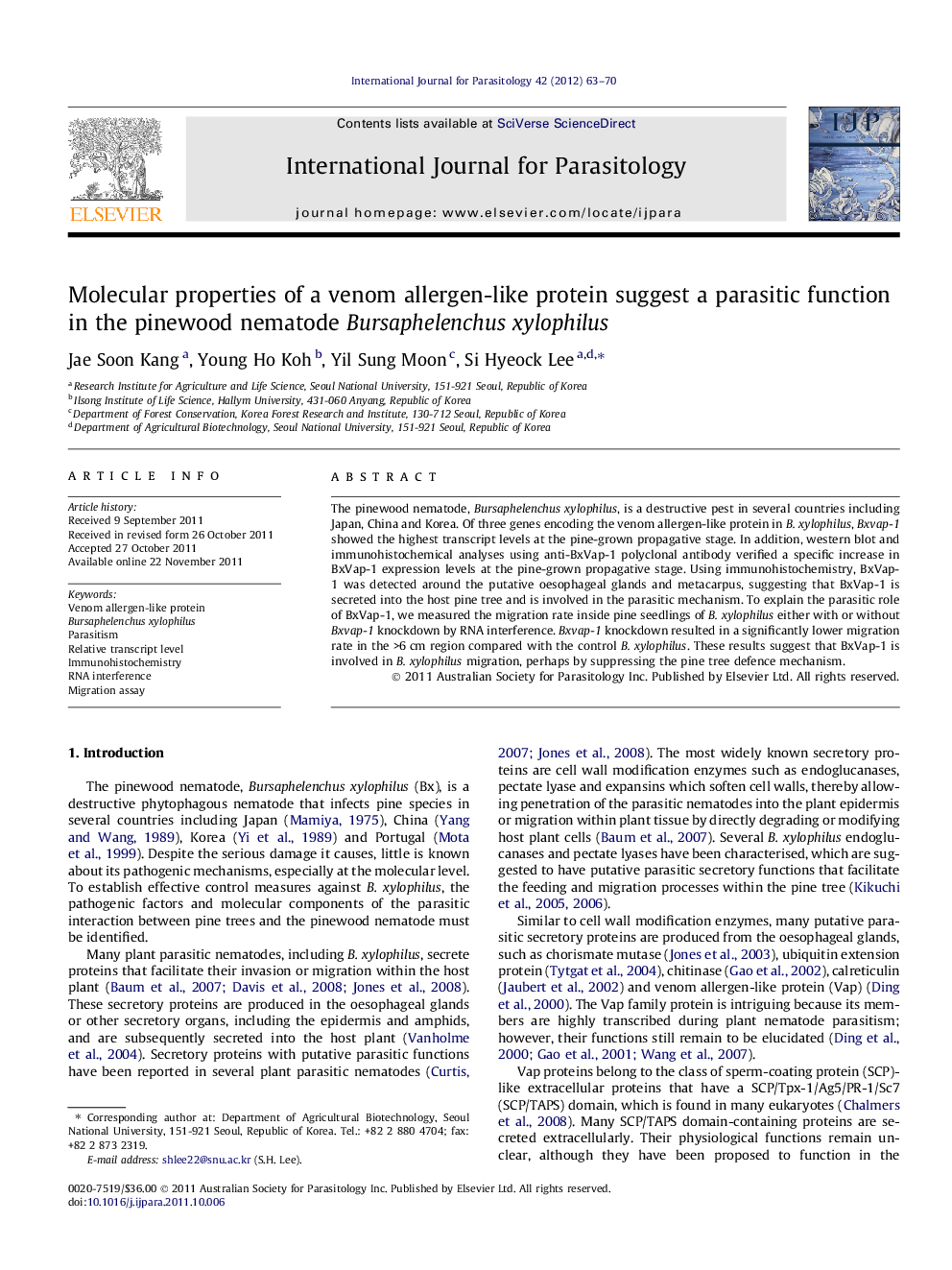| Article ID | Journal | Published Year | Pages | File Type |
|---|---|---|---|---|
| 2436132 | International Journal for Parasitology | 2012 | 8 Pages |
The pinewood nematode, Bursaphelenchus xylophilus, is a destructive pest in several countries including Japan, China and Korea. Of three genes encoding the venom allergen-like protein in B. xylophilus, Bxvap-1 showed the highest transcript levels at the pine-grown propagative stage. In addition, western blot and immunohistochemical analyses using anti-BxVap-1 polyclonal antibody verified a specific increase in BxVap-1 expression levels at the pine-grown propagative stage. Using immunohistochemistry, BxVap-1 was detected around the putative oesophageal glands and metacarpus, suggesting that BxVap-1 is secreted into the host pine tree and is involved in the parasitic mechanism. To explain the parasitic role of BxVap-1, we measured the migration rate inside pine seedlings of B. xylophilus either with or without Bxvap-1 knockdown by RNA interference. Bxvap-1 knockdown resulted in a significantly lower migration rate in the >6 cm region compared with the control B. xylophilus. These results suggest that BxVap-1 is involved in B. xylophilus migration, perhaps by suppressing the pine tree defence mechanism.
Graphical abstractFigure optionsDownload full-size imageDownload high-quality image (46 K)Download as PowerPoint slideHighlights► Both transcript and protein levels of Bxvap-1 increase in the pine-grown stage of Bursaphelenchus xylophilus. ► BxVap-1 is found around oesophageal glands and metacorpus in B. xylophilus. ► Bxvap-1-knockdown nematodes show reduced movement in the pine host. ► BxVap-1 is involved in B. xylophilus invasion and migration, possibly by suppressing the pine defence mechanism.
